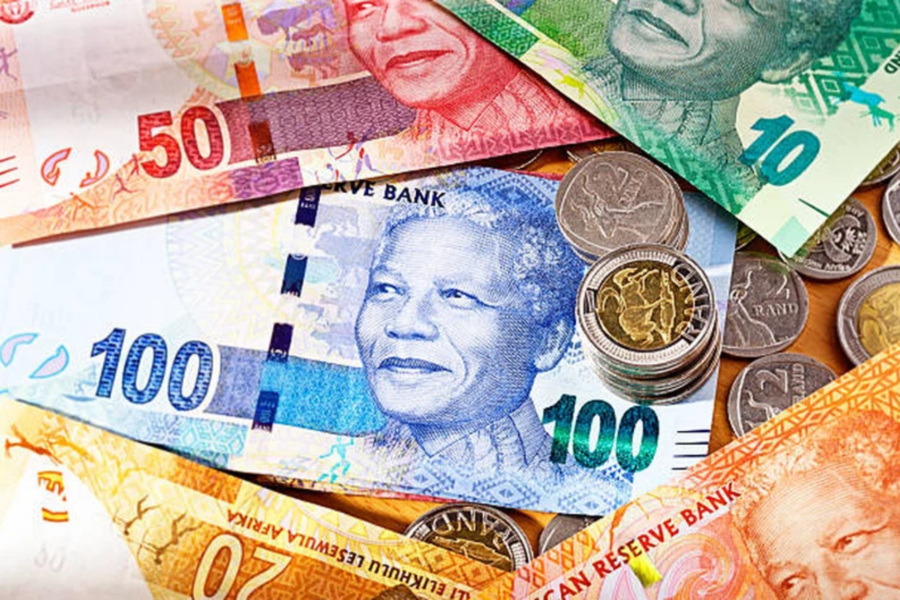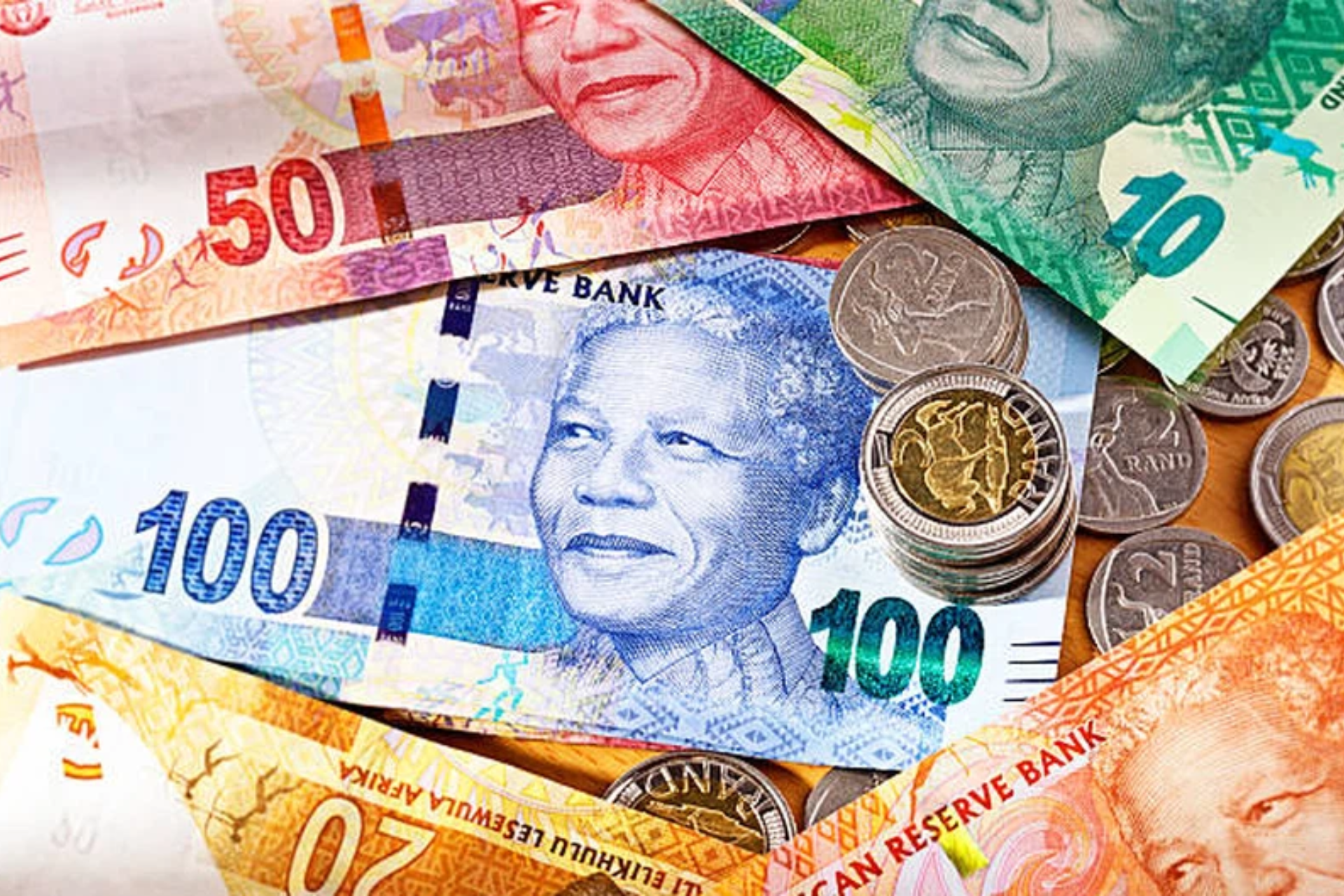
South African rand recovered some losses
The South African rand recovered some losses on Thursday after a consumer confidence index improved, although new data also showed that South Africa’s current account deficit had widened.

Reuters: The South African rand recovered some losses on Thursday after a consumer confidence index improved, although new data also showed that South Africa’s current account deficit had widened.
ALSO READ: End of the Rand? New BRICS currency on the agenda
SOUTH AFRICAN RAND RECOVERED SOME LOSSES
At 1638 GMT, the rand traded at 19.1625 against the dollar, nearly 0.2% stronger than its previous close. The dollar last traded around 0.1% stronger against a basket of global currencies.
The rand had weakened for most of this week, partly fuelled by a repeat of the country’s worst rolling blackouts implemented by state power utility Eskom, which have battered the country’s economy this year. A survey released on Thursday showed that South Africa’s consumer confidence recovered somewhat in the third quarter, with a reading of minus 16 points, up from minus 25 points in the second quarter of this year.
ALSO READ: Who are the richest South Africans in the world today? – 8 September 2023
But second-quarter current account data, showed the deficit had widened to 2.3% of gross domestic product from a revised 0.9% in the first quarter. “Today’s consumer confidence and current account figures beat estimates providing some encouragement in what has been a tough year for South Africa with the rand attempting to claw back some lost gains,” said DailyFX analyst Warren Venketas.
“Unfortunately, this optimism has been marred by escalating ‘loadshedding’ in the country that is disrupting business activity,” he said in a research note, using a local term for power cuts. Central bank data earlier on Thursday showed South Africa’s net foreign reserves fell to $55.444 billion by the end of August from $55.626 billion in July. South Africa’s benchmark 2030 government bond was stronger, with the yield down 2.5 basis points to 10.385%. Share on the Johannesburg Stock Exchange closed lower, with both the blue-chip Top-40 and the broader all-share index down around 1.7%.
U.S. DOLLAR
Reuters: The dollar was headed for its longest weekly winning streak in nine years on Friday, bolstered by a resilient run of U.S. economic data that has also put the end of the Federal Reserve’s rate-hike cycle into question. In Asia, traders were keenly watching moves in the Chinese currency, after the onshore yuan tumbled to a 16-year low in the previous session. The U.S. dollar index, which measures the greenback against its major peers, steadied at 105.02 in early trade, not far from the previous session’s six-month high of 105.15. The index was on track to extend its gains into an eighth straight week, and is up 0.7% so far.
ALSO READ: Who is the richest person in the world today? Top 10 list – 8 September 2023
The euro, the largest component in the dollar index, was staring at eight straight weeks of losses, with the single currency last marginally higher at $1.0701, after having fallen to a three-month low of $1.0686 on Thursday. “This week’s story was very much about the resilience we’ve seen in the data, the market’s psychology is that things just look so much better in the U.S. than they do elsewhere in the world,” said Ray Attrill, head of FX strategy at National Australia Bank.
Data out this week showed the U.S. services sector unexpectedly gained steam in August and that jobless claims hit their lowest level since February last week, while in the euro zone, industrial production in Germany, Europe’s largest economy fell by slightly more than expected in July. “Comparing the current growth fundamentals of Europe and the U.S., the U.S. still looks superior,” said Attrill.
Sterling similarly languished near Thursday’s three-month low and last bought $1.2484, set to clock a weekly loss of more than 0.8%. The offshore yuan edged 0.05% higher to 7.3379 per dollar, but remained not far from a 10-month low of 7.3490 hit in August. It is on track for a weekly loss of nearly 1% against the dollar, its worst week in about a month. China’s yuan has depreciated steadily since February as the faltering post-pandemic economic recovery and widening yield gap with other economies, particularly the United States, affected capital flows and trade.
ALSO READ: Empowering South African Entrepreneurs: The award-winning Play Your Part Academy
The onshore yuan, which touched its weakest level since 2007 on Thursday, has fallen nearly 6% against the dollar so far this year to become one of the worst performing Asian currencies alongside its offshore counterpart. “I expect USD/CNY to rise to 7.50 by mid-2024 because no major fiscal stimulus appears to be forthcoming, and thus monetary policy will need to continue bearing part of the burden of supporting the economy,” said Alvin Tan, head of Asia FX strategy at RBC Capital Markets. The yuan’s rapid decline has prompted authorities to step in to slow the pace of its depreciation.
The Australian dollar, often used as a liquid proxy for the yuan, was last 0.07% higher at $0.6381, but eyed a weekly loss of more than 1%. The New Zealand dollar similarly was on track to lose roughly 0.9% for the week and last bought $0.5890. Also on traders’ radars was a struggling yen, which rose 0.15% to 147.06 per dollar but remained on the weaker side of the key 145 level which prompted an intervention by Japanese authorities last year. While officials have stepped up their jawboning efforts to defend the yen, they have also continued to stress the need to maintain the Bank of Japan’s ultra-loose monetary policy.
BRITISH POUND
Reuters: Sterling held at a three-month low against a stronger dollar on Thursday, as traders focused on dovish signals from the Bank of England and moderating corporate inflation expectations. The dollar firmed on Thursday after U.S. jobless claims hit their lowest level since February, moving in the opposite direction to economists’ forecasts and raising expectations for higher U.S. rates for longer. Sterling softened versus the dollar as a result. “In the UK we also had Bailey’s comments yesterday which were quite dovish, at least on the surface, and this means that sterling was coming into today’s session with weak momentum,” said Francesco Pesole, FX strategist at ING.
ALSO READ: ZAR kicks off the week on the back foot
At 1357 GMT, the pound was down 0.4% against the “dollar at $1.2458, at its lowest since June 9. The pound was 0.1% lower against the euro at 85.86 pence. Bank of England Governor Andrew Bailey said on Wednesday that the bank is “much nearer” to ending its run of interest rate increases but borrowing costs might still have further to rise because of stubborn inflation pressures.
Interest rate hike expectations were further tempered on Thursday after a Bank of England survey showed UK businesses are planning their lowest price rises since Feb 2022, and expect to raise prices over the coming year by less than they had planned previously. The survey will offer some reassurance to policymakers that inflation is on course to return to target.
“It’s not normally a survey that the BoE follows too closely however when you compound it with what we’ve been hearing from BoE speakers recently – which is arguably been quite dovish compared to what the data suggested previously – then obviously the market have scaled back rate expectations,” said Pesole. Traders are now placing a 75% chance of a 25 bps hike at the central bank’s next policy meeting on Sept. 21.
ALSO READ: Opposition parties challenge Presidential election in Supreme Court
Elsewhere, mortgage lender Halifax said on Thursday that British house prices have fallen at the fastest pace since 2009 over the past year, reflecting the increasing impact of higher interest rates.
GLOBAL MARKETS
Reuters: Asia’s stockmarkets dipped on Friday, with tech shares tumbling on deepening Sino-U.S. tensions, while the dollar was set to seal its longest winning streak in nine years as investors braced for U.S. interest rates to stay higher for longer. MSCI’s broadest index of Asia-Pacific shares outside Japan fell 0.2% in early trade and is down 1.4% for the week. Hong Kong markets were closed for the morning due to storms lashing the city. Japan’s Nikkei fell 0.8%. Some $200 billion has been wiped from Apple’s market capitalisation in two days on reports of China curbing iPhone use by state employees and on Friday protectionism fears were weighing on shares of chip suppliers in Asia.
Shares in Taiwan’s TSMC, a big Apple supplier, fell 1% at the open. Shares in South Korea’s SK Hynix, whose chips some users have found in China’s Huawei Technologies’ new phone, fell as much as 4.5% to a two-week low. Tokyo Electron shares dropped 4.3%. “China’s partial ban on Apple products put trade wars and U.S.-China decoupling back on the agenda,” said Capital.com analyst Kyle Rodda. “The ban is narrow in scope however, it illustrated the two-way costs and risks of de-coupling.”
ALSO READ: Fuel price UPDATE: More bad petrol and diesel news awaits in October
U.S. suppliers’ shares had fallen overnight and helped drag the S&P 500 0.3% lower and the Nasdaq down by 0.9%. S&P 500 futures were flat in Asia on Friday. The selling also came while tech stocks have been under extra pressure from U.S. yields that have been rising on bets that U.S. interest rates are likely to linger at 20-year highs. That in turn has unleashed the dollar, which is up for an eighth straight week against a basket of currencies , a rally that has carried the U.S. currency index more than 5% higher.
Dollar gains have pushed the Chinese yuan to a 16-year low and have prompted a step up in rhetoric from Japanese policymakers growing uncomfortable with the yen’s slide. “Given challenges facing China, and more signs of a re-tightening of the U.S. jobs market, it is not surprising that the dollar is finding support, allowing the ‘dollar juggernaut’ to continue its rampaging run,” analysts at ANZ Bank said in a note.
The euro is down 0.5% this week and traded steady at $1.0715 in Asia with investors reckoning a hold is more likely than a hike from the European Central Bank next week. The yen has found new 10-month lows and, at 147.13 per dollar is heading towards the vicinity of 150, where traders see high risks of authorities stepping in with support. Japan’s top currency diplomat Masato Kanda said on Wednesday that authorities won’t rule out any option to clamp down on “speculative” moves, while chief cabinet secretary Hirokazy Matsuno said the government was watching with “urgency”.
ALSO READ: Newspaper front pages from around the world, 8 September 2023
The Australian dollar is down more than 1% on the week and traded at $0.6384 on Friday. Benchmark 10-year U.S. Treasury yields are up 5.5 basis points to 4.22% this week. Two-year yields are up 6.6 bps to 4.93%. Brent crude prices are up this week, but gains on recently robust U.S. data have been tempered by softening indicators of demand in Europe and China. Brent futures were last steady at $89.60 a barrel, up 1.2% for the week.
Published by the Mercury Team on 8 September 2023
